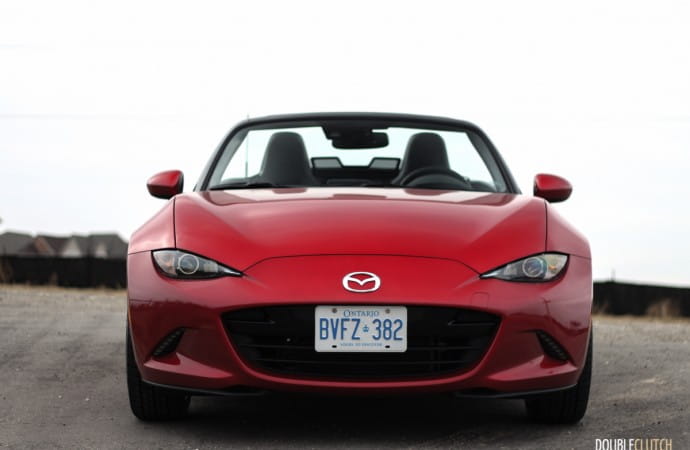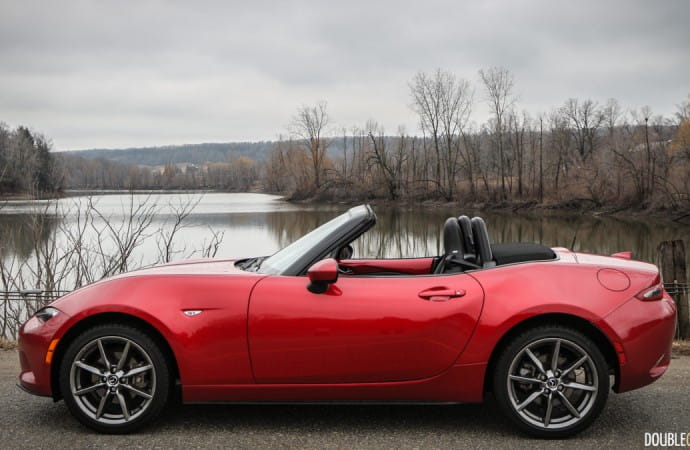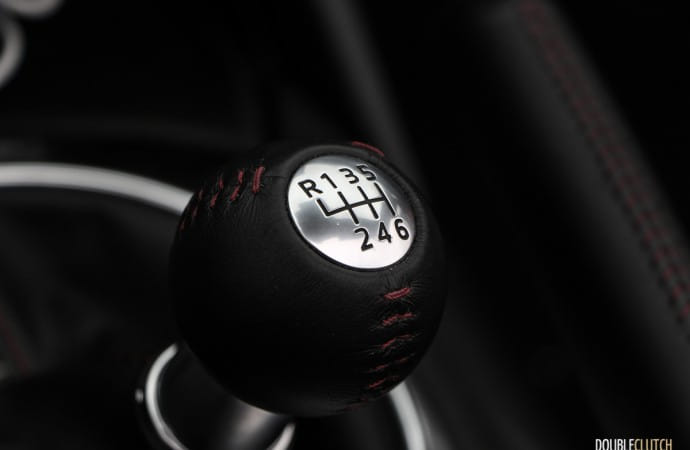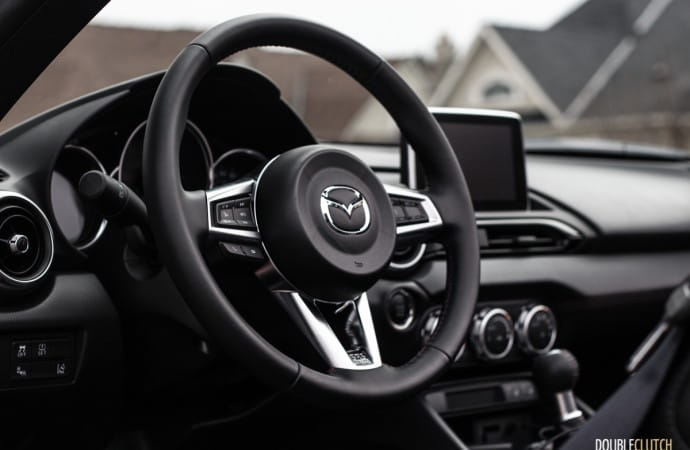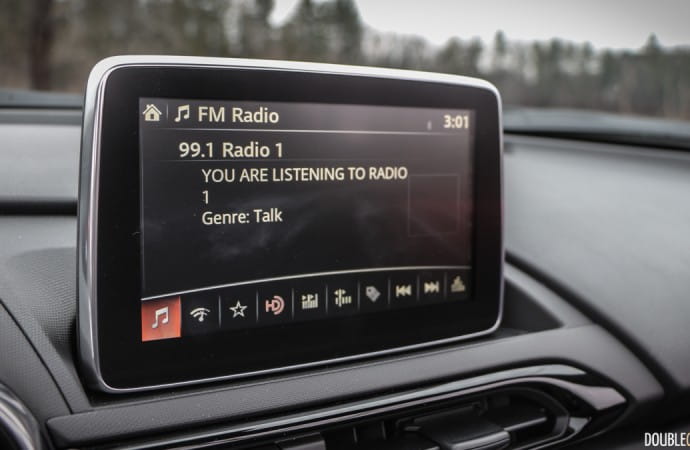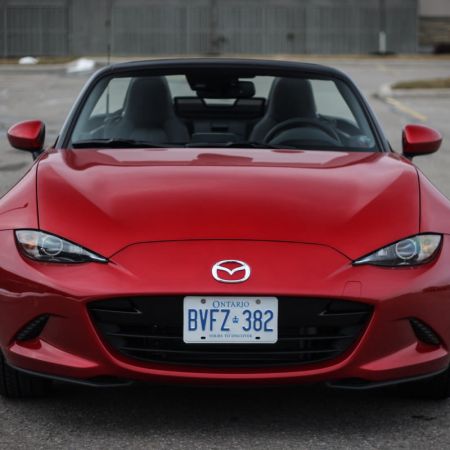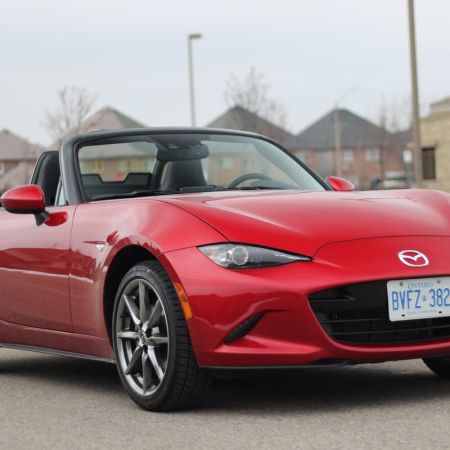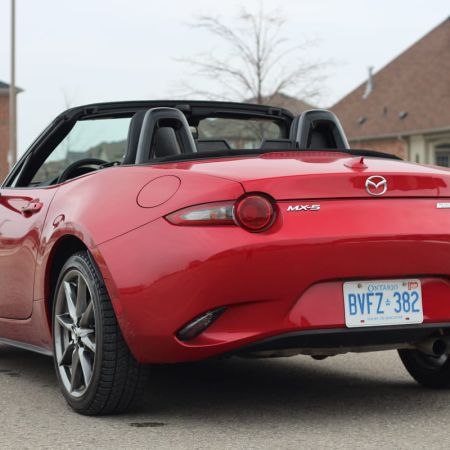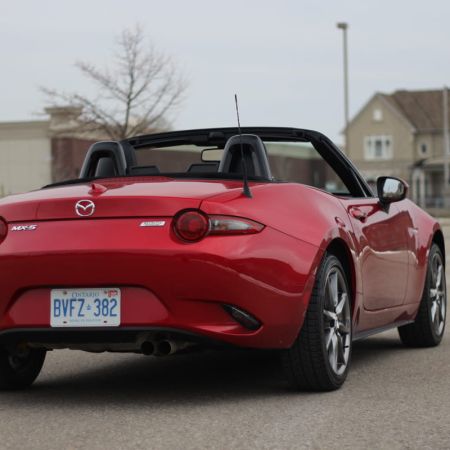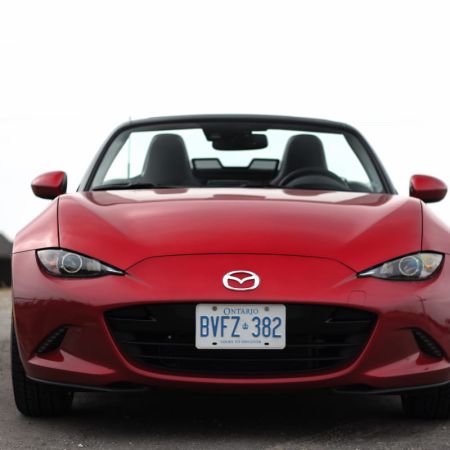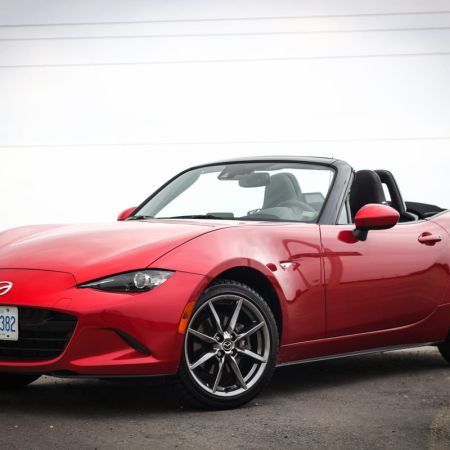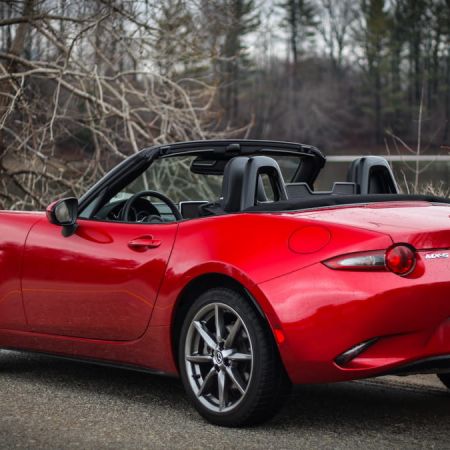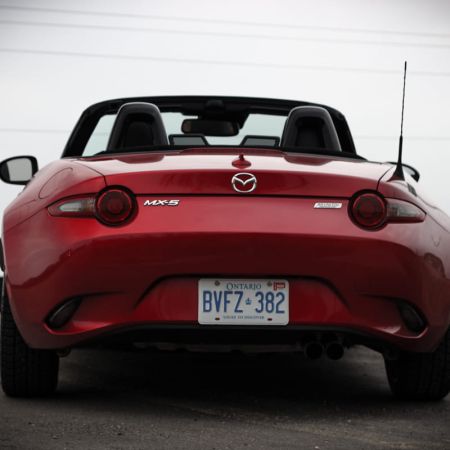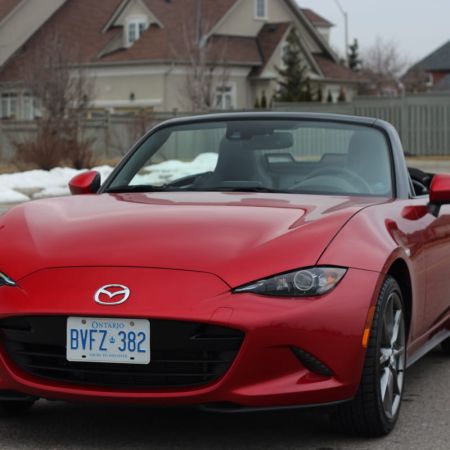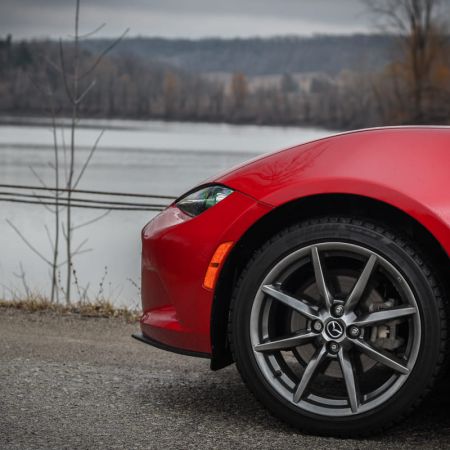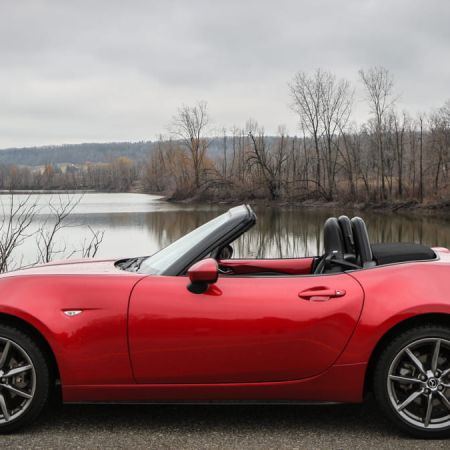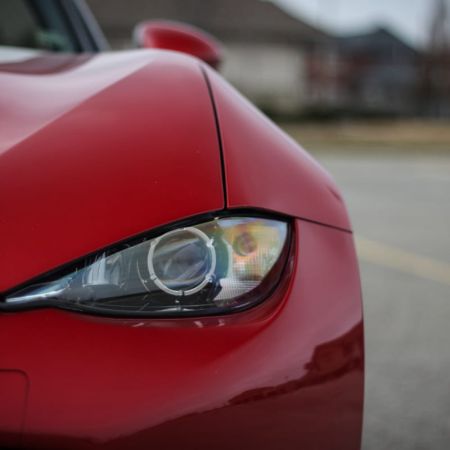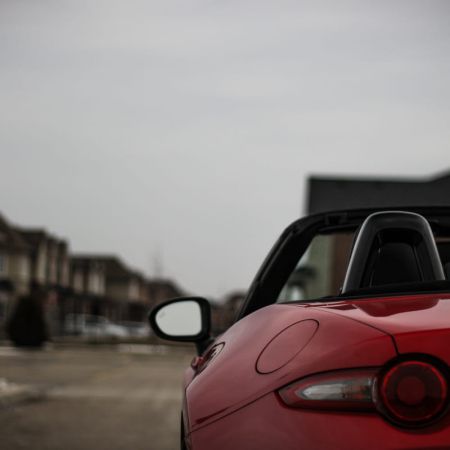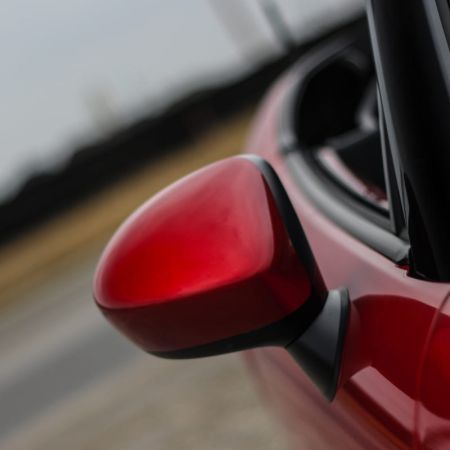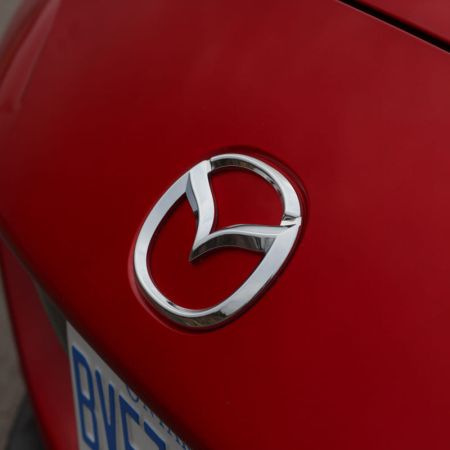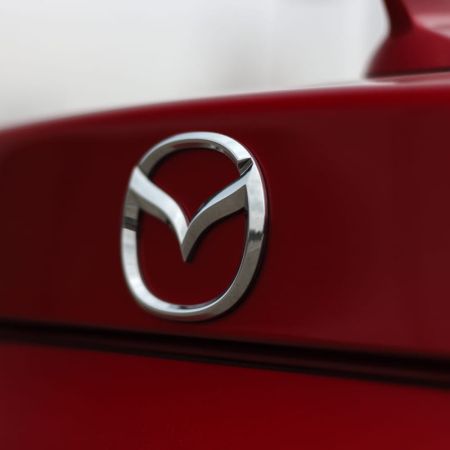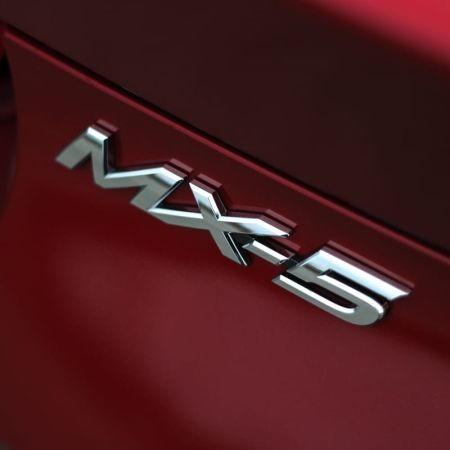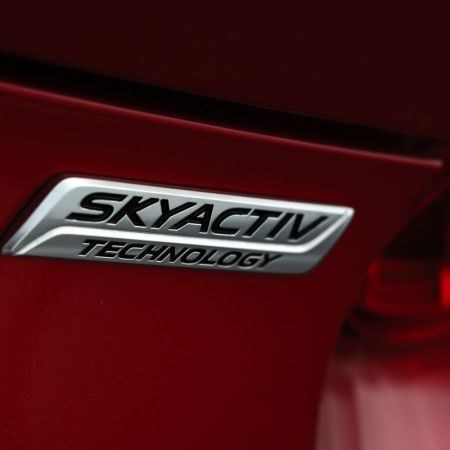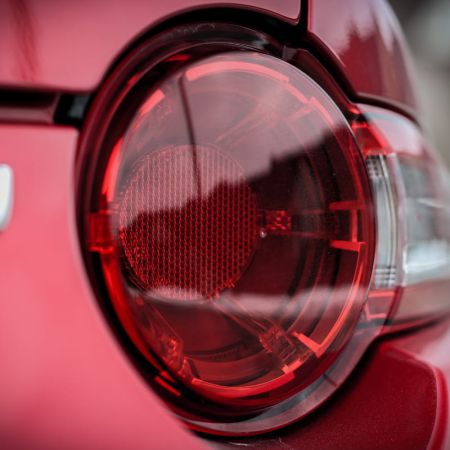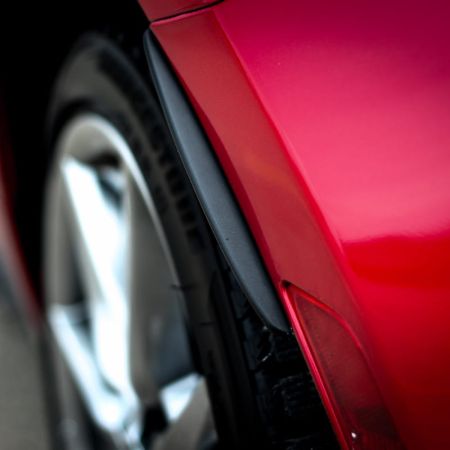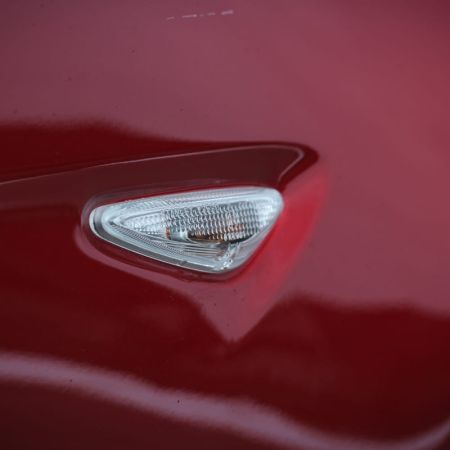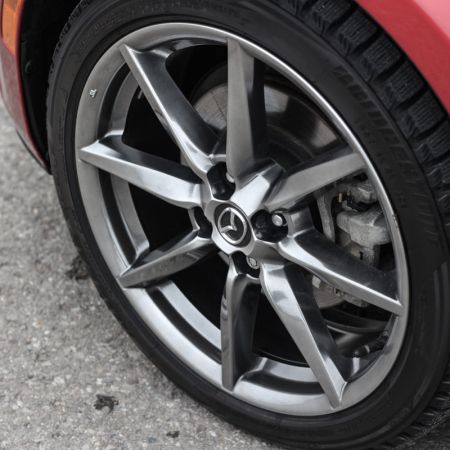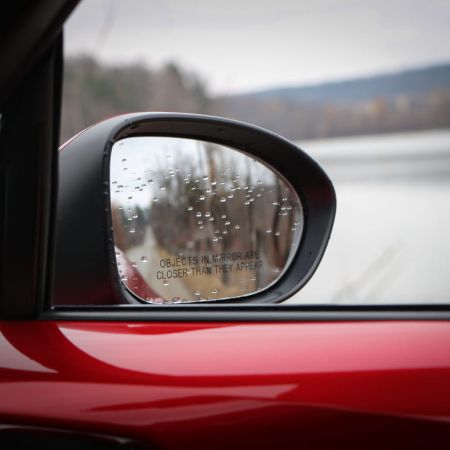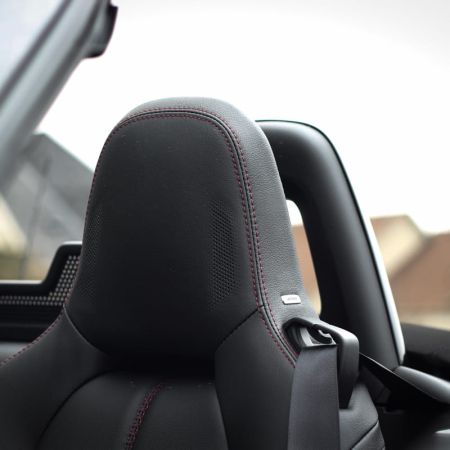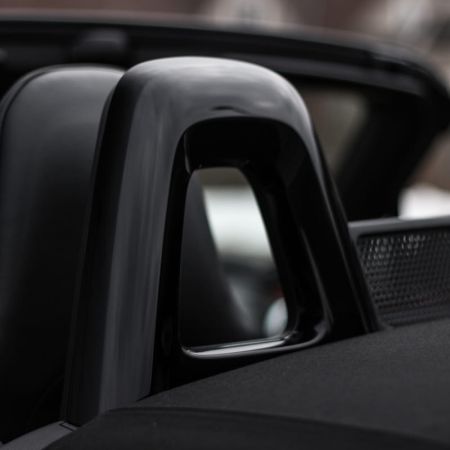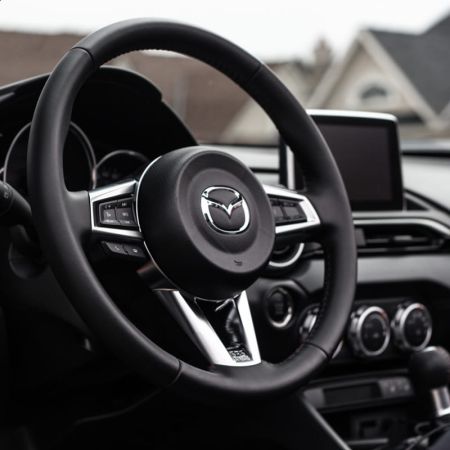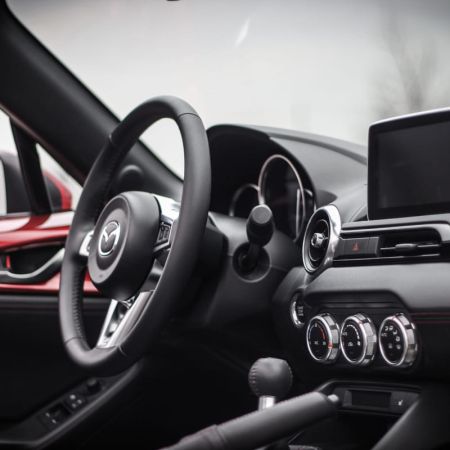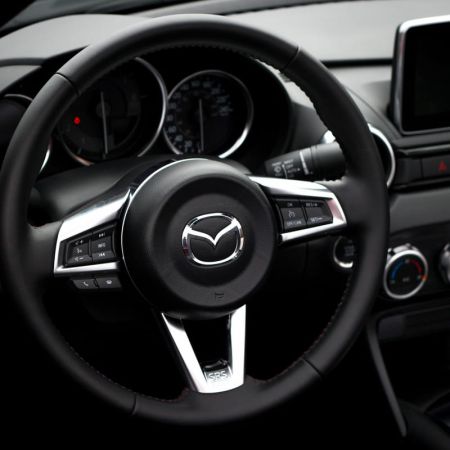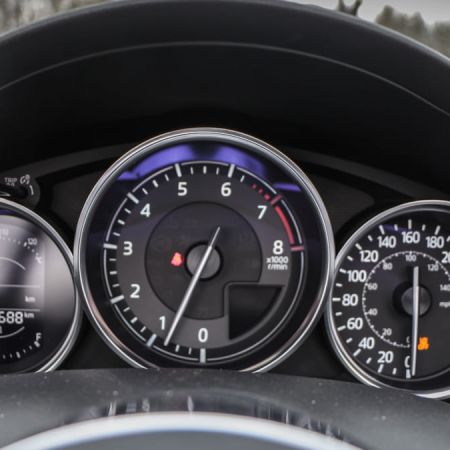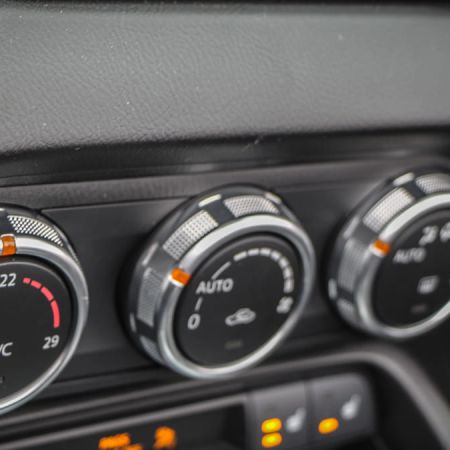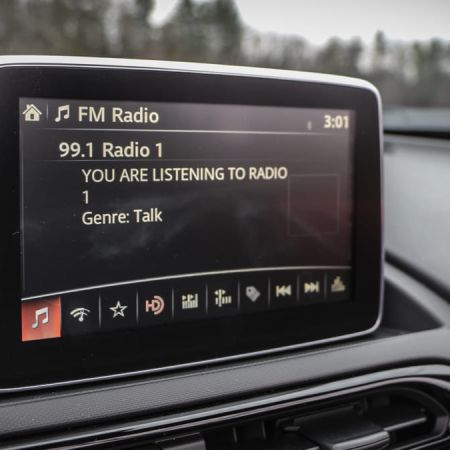Purists absolutely adore the Mazda MX-5 “Miata”, though there are some mixed feelings from the mainstream car-buying public. Is it practical? Can it be used all 12 months of the year without issues? And finally the biggest sticking point with the most recent iteration – does it need more power? We decided to jump into a 2017 Mazda MX-5 GT to see which of these concerns have merit. The undeniable reality is; the little Japanese roadster ranks very high on the smiles-per-dollar graph.
The first-generation MX-5, known as the “NA”, was introduced to the public at the 1989 Chicago Auto Show, debuting as a 1990 model year car. Manufactured in Japan, it was also sold as the Eunos Roadster overseas. This car was considered the rebirth of the British roadster, with an added splash of reliability. Going through two more generations, the NB and NC, and a few limited-edition models like the turbocharged Mazdaspeed MX-5, the Miata went on to be one of the bestselling roadsters of all time. 2016 saw the introduction of the latest model, dubbed the ND.
Our test vehicle here is a 2017 GT, the top trim level available in soft-top configuration. Painted in a stunning Soul Red Metallic that, subjectively, shows off the car’s lines in a beautiful manner, the paint complements the 17” high-lustre gunmetal wheels perfectly. There are LED daytime running lights and taillights, while the headlights are projector HIDs. The latest car does away with the happy-looking nature of every MX-5 that preceded it, and packs more of an angry, sassy look that reflects its aggressive personality.
The only available powerplant on the MX-5 is the 2.0L inline four-cylinder SKYACTIV-G engine, loosely shared with the Mazda3 (reviewed here). This engine has a 13.0:1 compression ratio and sends power only to the rear wheels, offering 155 horsepower at 6,000RPM and 148 lb-ft. of torque at 4,600RPM. It may not sound like a lot on paper, but the engine response from this car is something that must be experienced to understand properly. Even when compared to the MX-5’s chassis-mate, the Fiat 124 Spider (reviewed here), the urgency of the SKYACTIV motor renders the stated numbers all but forgotten.
A six-speed automatic is also offered, but our test vehicle is equipped with the SKYACTIV-MT six-speed manual, in expected affordable roadster fashion. There are no fancy dual-clutch gearboxes available here; the short-throw shifter feels natural and not rubbery at all. The clutch has a definitive bite point, with a perfect relationship with the shifter. This car is a dream to row through the gears in while enjoying the responsiveness and barrelling through your favourite back roads with the top down, regardless of season.
Included on the GT model is a sport-tuned suspension, which also adds a limited-slip differential. The car also boasts Bilstein shock absorbers that make for phenomenal ride quality, though definitely on the firmer side. It’s not harsh, but this is a sports car and does nothing to hide this fact. The steering itself is electrically assisted, which is by far the biggest letdown. It responds well enough, and it’s very easy to induce oversteer and manage the car in any sort of conditions, but there isn’t as much analog feel through the wheel as there was on the previous-generation MX-5 (reviewed here). The ND’s powertrain with the NC’s steering would be a match made in heaven.
The interior on the MX-5 is very minimalistic and driver-focused; literally everything is positioned to make the car more driver-oriented. The driving position is perfect, with great pedal placement for quick heel-toe downshifts. The cabin itself is a bit tight for anyone over six-feet, though the passenger seat is for smaller folks. The driveshaft and transmission tunnel carve into the passenger footwell, and the low dashboard means anyone with longer legs will find their knees crashing into the dashboard at every bump.
Interior noise is obviously not really a concern with the top down, but when it’s in place, it’s decently quiet for a soft-top convertible. The GT adds an extra bit of insulation over the GX and GS (reviewed here) models, which helps considerably. At highway speeds, there is a noticeable amount of noise, though it’s no more than expected. With the top up, the interior can also be a little bit claustrophobic, but the good fit and finish and high quality of materials helps make it a pleasant place to spend time. The soft-top is one of the easiest in the industry to operate, requiring just a quick latch pull and one-handed operation to open and close. There is no power operation, but at no point will buyers consider this an unnecessary omission.
Entertainment and navigation are controlled via Mazda’s 7” touchscreen with HMI Commander. The screen only has touch functionality when the car is at a stop, and requires use of the rotary controller when in motion. There is USB connectivity as well as Bluetooth, and the GT includes a Bose nine-speaker audio system with headrest speakers and an integrated subwoofer. Those who intend to do a lot of highway driving with the top down should consider the GT for the Bose system alone, because it’s great. Phone calls over Bluetooth can be a challenge as with any roadster, as clarity isn’t optimal. Apple CarPlay or Android Auto compatibility is not available just yet, but we expect to see it very soon.
When transitioning to the SKYACTIV-G motor, fuel economy and weight savings are Mazda’s biggest priorities, though no driving passion was sacrificed in favour of either. Mazda rates this model for 8.8L/100km city and 6.9L/100km on the highway. Our test took place on a cold week during the winter, and naturally a few spirited runs through the back roads of southern Ontario. The test average over about 600km of driving was a surprisingly good 7.1L/100km, and it’s worth mentioning that the compression ratio of this engine means 91-octane premium must be used.
Pricing starts at $31,900 for the base MX-5 GS with the manual transmission. The mid-level GS is priced at $35,800, but offers a Sport Package that many drivers will want. This includes 17” forged BBS wheels, Brembo brakes, and Recaro seats. The GT is the top trim level, which sits at $39,200, and includes a leather interior, blind spot monitoring with rear cross traffic alert, rain sensing wipers, automatic climate control, and the aforementioned Bose sound system. The sticker price is $39,200, plus a $300 charge for the Soul Red paint.
Other cars in this price bracket worth considering include the Toyota 86 (reviewed here) and its sister car, the Subaru BRZ. Both of these vehicles have the same basic formula; rear-drive, manual transmission, and very light curb weights. A bit heavier but offering more performance for the same kind of money is the Nissan 370Z (reviewed here), which is a lot more dated but is still a very involving car. If having an open-top in this approximate size is a priority, the MX-5 shares its segment with its sister, the Fiat 124 Spider.
They say driving a slow car fast is a lot more rewarding than driving a fast car slow. The reality of the driving world is, it’s undeniably satisfying to push a car like this MX-5 through your favourite roads or even just take it on a weekend morning coffee run to the town square. The short gear ratios, the immediate torque, and overall fun personality of the car is a blatant reminder of the fact that simplicity often trumps technology. This isn’t the most practical car, with limited trunk space and low ground clearance, but we’ll be damned if the 2017 Mazda MX-5 GT isn’t one of the most fun cars that can be had in any price bracket.

